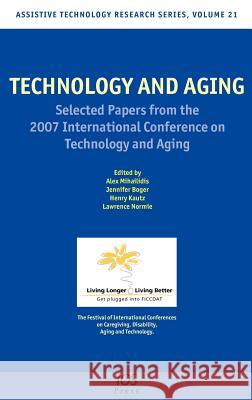Technology and Aging » książka
Technology and Aging
ISBN-13: 9781586038151 / Angielski / Twarda / 2008 / 252 str.
This publication presents articles on Aging-in-Place, Assistive Technology, Monitoring and Telehealth, Transportation and Mobility, and Design. The section on assistive technology (AT) represents arguably the most mature and generic aspect of technology and aging; except that AT can hardly be regarded really as a specific discipline any longer. Assistive devices and systems command an expansive gamut of technological and engineering specialties, drawing upon mechanical engineering and industrial design at one end of the field and cybernetic systems engineering and brain-computer user interfaces at the other. The largest section in the book, on monitoring and telehealth, reveals novel applications of advanced pattern recognition techniques, some of which have, up to now, found roles primarily in the military, process engineering, and financial sectors. Transportation and mobility still represents by far the largest and most commercially lucrative market segment of technology for seniors. There is however a clear trend towards synthesis of information and communication technologies (ICT) and mobility technologies, which is embodied in the latest developments of automatic collision avoidance and full or semi-autonomous navigation functions in powered mobility devices. The last section is dedicated to design issues. It is proposed that designing for the special needs market before making a design as inclusive as possible to the mainstream market is a viable alternative to the currently accepted notion of inclusive design, provided that aesthetics are appropriately addressed. To conclude, we see a social shift from institutional to home-based care, in which information communication technology based solutions now afford the possibility of aging-in-place for the many thousands of people having mild to moderate cognitive impairment.











